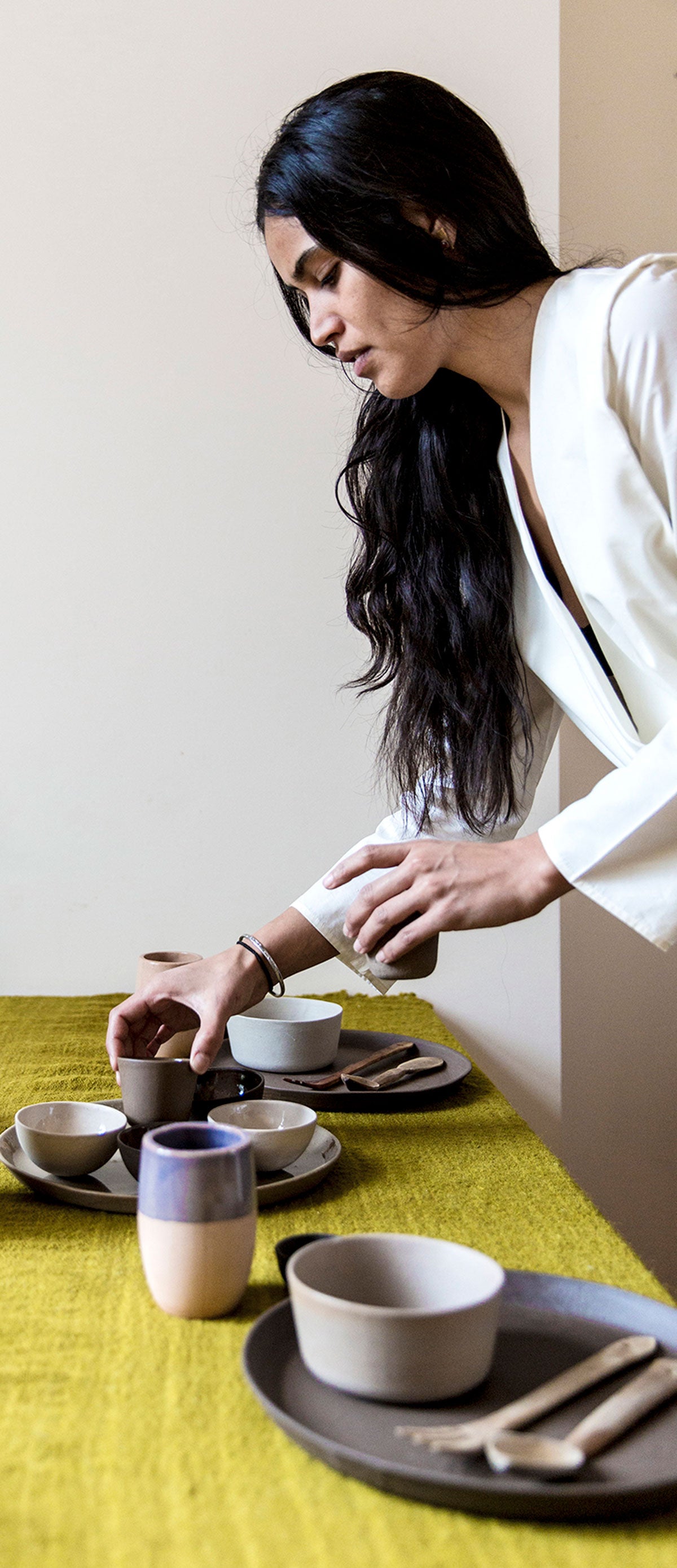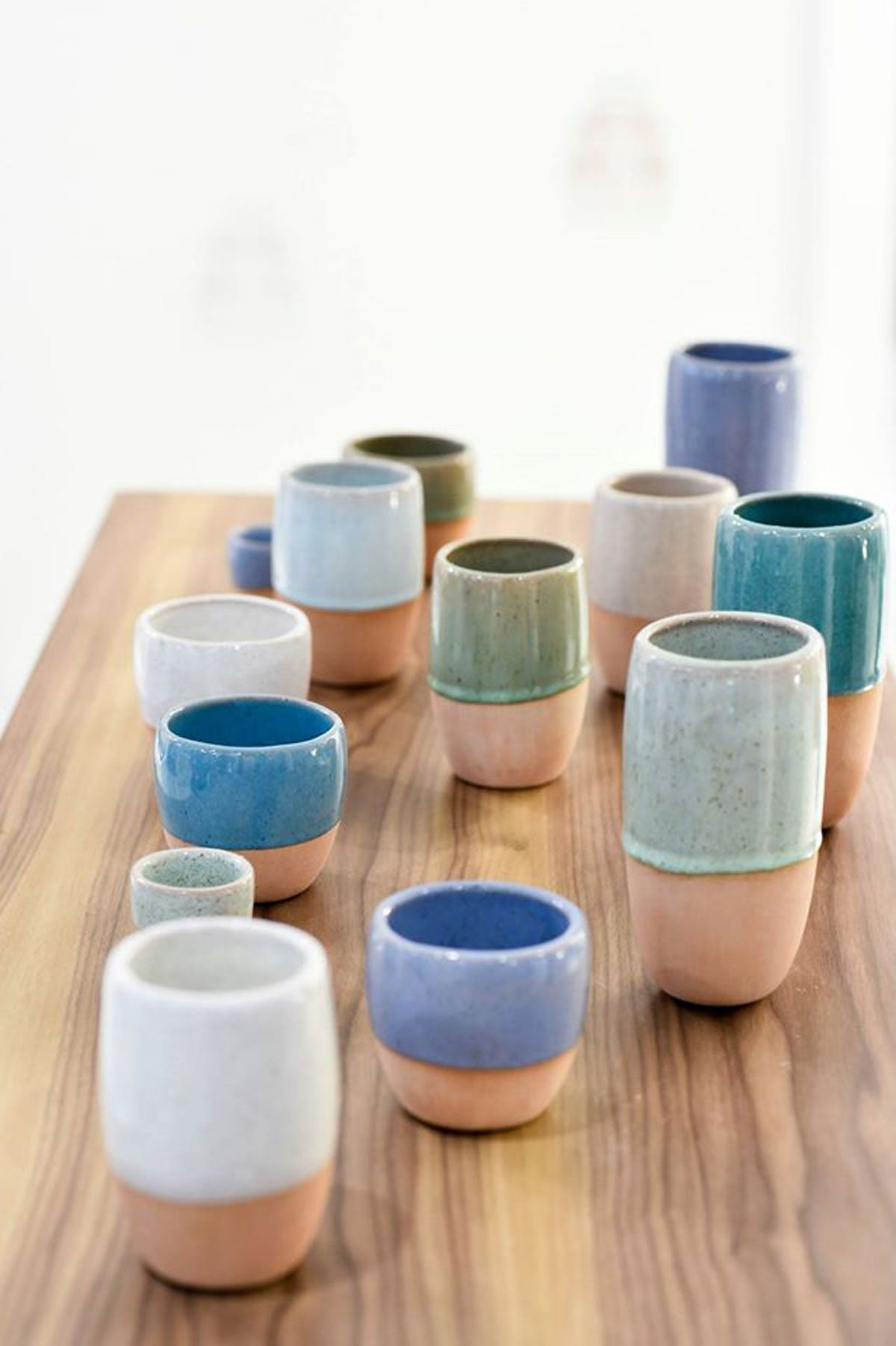The so legendary art of creating objects by modeling clay and baking it in the oven, called pottery, through which we obtain fragile objects -but with the ability to isolate temperature- has been adopted as a way of expression by Industrial Engineer Perla Valtierra, award-winning Mexican ceramist* who lives in Paris, with whom we had the chance to chat.
REGINA ROCHA: Is Perla Valtierra a brand?
PERLA VALTIERRA: Just now I am in the process of differentiating Perla Valtierra, the signature of the ceramic creations I make, and Valtierra, the brand. Perla Valtierra comprises unique pieces and original collections I design freely, and Valtierra are the adjustments to these catalogues with the requirements of specific clients (restaurants and hotels) for the manufacture of series.

RR: What makes your ceramics proposal so special?
PV: We are working with clay, high temperature, and mixing materials in an experimental way. Usually designers work with a workshop that has one kind of paste and enamels and design a piece based on that; in our objects instead, I am looking to contrast enamels with clays, which are usually not worked at the same time and each item is made not only in a production workshop, but many different places intervene in their creation and this is what makes our pieces unique, different, and hard to copy.
RR: Where do you get your inspiration?
PV: From the material, it provides the line and guideline to work; inspiration arises as I work with it. I get excited and try to work in different places where ceramics are handled, because the features of the clay are different in each one, like in Oaxaca, Bajío, Chihuahua, or Japan, where every region has its particularities.
Also, we develop enamels every time we create a collection and there are always more than the ones we need at the time, so they pile up and then we have more sources of inspiration, so we use them for the following collections.

RR: How do you face design, the blank page?
PV: I like to think about shapes, I don’t sketch, I go to the workshop and we start to work. It is true that I have two paths, though: for the work of Perla Valtierra I like to go deep into research on several topics, depending on the place I’m in, and then my suggestions arise; for example, when I was in Japan, I did research on the technological development of Japanese pottery from its beginnings to the early days of the Meiji Era**, and based on that ceramics technological and cultural development research, I designed a collection.
The second path is the one I use for Valtierra, it is focusing on the needs of clients and I modify the collections I have to adequate pieces to their requirements. We start with a brief and their mood board and from that point I present my proposals. I have been very lucky because I have always been given so much freedom, they understand my work and respect the identity of what I do.

RR: What is your manufacturing process?
PV: This is an artisanal process and we put a lot of care in the quality. It involves miles and miles of road, I travel all the time, I’m between Paris and Mexico, across all the regions that participate in the creation of items; and so I am always present in the workshops when something new is coming out, until the pieces are ready, tested, and we are sure we can repeat them with the same quality. Once at that point, reproduction is easy, we have catalogues and we just need to begin producing.
RR: What is your contribution to the industry of ceramics?
PV: After taking tours to learn about, ask, and talk, I select and work with many workshops, we have real collaborations with them, I don’t design over them, but we define where we are headed and what we wish to create together. I travel across miles to find committed people, who know really well how to do their job, hungry to continue learning and open to new challenges; I am working with Jesús Torres in the handmade collection I have, he is the last turner in the Bajío area, the rest are working casting in molds. And my direct contribution to them is that I broaden their market to a more demanding one, one that doesn’t only buy clay in the rough, but who appreciates pieces that have been thought of, designed, and whose elaboration is complex, and buys them.

RR: What is your latest novelty?
PV: I opened a pop-up store in Paris! The first edition was from November 2018 to January 2019 and it will open twice a year. There I introduced the new collection I now brought to Mexico and it is starting here.
RR: Is there something you would like to transmit?
PV: My products are in constant evolution and can be collected to create tableware sets with a free spirit, without having to always buy the same things, since we are changing every year.
And with this we say goodbye to Perla and her world of pottery, in which not only utility and beauty mix, but also cultures and materials are combined to give way to a current, aspirational, and esthetic proposal, with a history of interconnection, which is so trendy.


